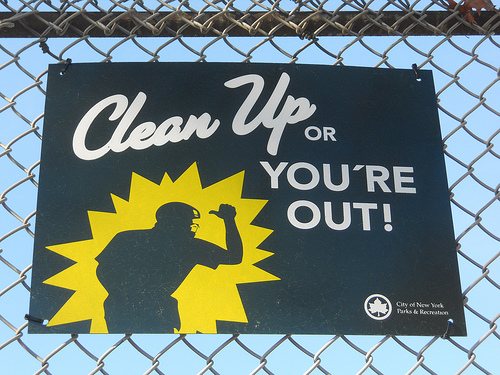 Looking for new ways to get in the cleantech game.Photo: emilydickinsonridesabmxIt’s a rite of spring, the annual Cleantech Forum in San Francisco. Venture capitalists, startup entrepreneurs, and various hangers-on gather at an upscale hotel to network, pitch, and hopefully clinch some deals.
Looking for new ways to get in the cleantech game.Photo: emilydickinsonridesabmxIt’s a rite of spring, the annual Cleantech Forum in San Francisco. Venture capitalists, startup entrepreneurs, and various hangers-on gather at an upscale hotel to network, pitch, and hopefully clinch some deals.
There are scores of these green biz conferences, of course, and after awhile they all tend to blend together in a mashup of hype and prognosticating. Still, the Cleantech Forum is one I make an effort to attend, and not just because it’s a short BART ride from Berkeley.
Over the years, I’ve found the confab to be something of a bellwether of trends — or at least what’s in and out of fashion in the investing and green tech worlds.
In years past, electric cars, solar energy, and other flash technologies have been on display. This season sexy is out, and boring but big is in. Gone are those world-changing pronouncements, perhaps appropriately in a world that is literally melting down as Mother Nature shows who’s the boss.
“When I read the paper this morning, the two big stories were Japan and Libya,” Thomas Steyer, the billionaire San Francisco hedge fund manager who led the fight last year to defeat Proposition 23, which would have scuttled California’s global warming law, told conference-goers Monday evening. “To me, those are energy and environment stories. I look at Japan — we cannot control nature. Libya to me is all about energy.”
So where is the green tech world going, if the Cleantech Forum is a leading indicator?
It’s all about energy efficiency, the smart grid, biochemicals, and reformulating various industrial processes to make them cleaner and greener. The companies here have names like Agentis, Agilyx, and OPX Biotechnologies.
For instance, BuildingIQ, a Sydney startup spun out of an Australian government lab, offers software over the Internet that manages commercial buildings’ energy use.
BuildingIQ’s pitch: “Our software learns the thermal characteristics of a building and incorporates weather forecasts, energy tariffs, demand response signals and occupant comfort feedback and uses proprietary to continuously optimize existing energy management systems.”
That results in energy savings of 10 to 20 percent, according to Mike Zimmerman, BuildingIQ’s chief executive and a former tech venture capitalist and Yank expat who I know from my Sydney days.
The kicker: Building owners don’t need to install expensive energy efficiency equipment or sensors to save money.
Not earth-shaking, but maybe earth-saving.



